Summary in the Video
Explanation in the video
The ‘Overview, Summary, or Conclusion’ of this article can be found at the beginning of the YouTube video, so please refer to it.
If possible, we would appreciate it if you could subscribe to our channel to help maintain the site. It serves as motivation for us!
Introduction
This video series is structured around four major works by Émile Durkheim.
- The Division of Labor in Society (1893)
- The Rules of Sociological Method (1895)
- Suicide: A Study in Sociology (1897)
- The Elementary Forms of Religious Life (1912)
This particular video focuses on The Division of Labor in Society.
Through this work, we will explore what sociology is — and what it aims to achieve.
First, the topics related to The Division of Labor in Society are as follows.
This video focuses especially on the theme of “division of labor.”
- Chronology
- What are the bonds that connect people to one another?
- What is division of labor and what are its functions?
- Why does division of labor produce social solidarity?
- [Column] What is sociology? (This is the end of the current video)
- The difference between mechanical solidarity and organic solidarity
- The difference between segmentary society and organized society
- Collective conscience and collective representations
- [Column] What is sociological theory?
- Examination of solidarity: repressive law and restitutive law
- Non-contractual elements in contracts
- A society without crime is unhealthy
- [Column] Durkheim’s critique of Tönnies
- Is individualism detrimental to solidarity?
- Coercive division of labor and anomic division of labor
- Intermediate groups as a measure against the adverse effects of modernization
Major Chronology
[1] The Division of Labor in Society (1893)
[Content] A work discussing industrial society.
It argues that division of labor produces social solidarity (bonds, moral forces, ties).
Main keywords: non-contractual elements of contracts, the science of morality, mechanical solidarity/organic solidarity, segmentary society/organized society, repressive law/restitutive law, coercive division of labor, anomic division of labor
[2] The Rules of Sociological Method (1895)
[Content] A concise summary of Durkheim’s theoretical approach.
Main keywords: ‘treat social facts as things’, social facts, functional analysis, social realism, rationalism (positivism)
[3] Suicide: A Study in Sociology (1897)
[Content] A work that serves as a concrete application of The Rules of Sociological Method.
Main keywords: egoistic suicide, altruistic suicide, anomic suicide, method of concomitant variation
[4] The Elementary Forms of Religious Life (1912)
[Content] It is a study of religion, focusing on its role as a moral force and a source of social solidarity, which may be comparable to or even greater than the role of the division of labor.
Main keywords: collective effervescence, ritual, belief, the sacred and the profane, totemism, ‘God and society are one and the same
What are the bonds that connect people to one another?
The term bond generally refers to a strong connection or tie between individuals — one that involves mutual trust and emotional support.
For example, we might say that “the bond between family members” or “the bond between friends” is important.
While we may intuitively understand that such bonds matter, asking how these bonds actually arise within society is a thought-provoking question — and an important discovery of a sociological problem.
Durkheim is said to have addressed the question
“What is the bond that ties people together?”
in his first lecture at the University of Bordeaux in 1887.
His interest in this question persisted throughout his career.
Later, in The Division of Labor in Society (1893),Durkheim argued for the moral function of the division of labor.
So, how exactly does the division of labor generate bonds between individuals?
What is the division of labor in the first place?
In societies where the division of labor had not yet developed, what elements produced social bonds?
Does the division of labor contain any elements that might undermine those bonds?
And what, in the first place, gave rise to the division of labor?
These are the central questions that The Division of Labor in Society seeks to address.
What Is the Division of Labor? What Are Its Functions?
POINTdivision of labor:social division of labor.
It does not refer only to the economy, but also includes fields such as politics, art, and science.
For example, in politics, responsibilities are divided among legislation, administration, and the judiciary.
Even within the administrative branch, there are divisions among ministries, and within each ministry, there are roles such as leadership, technical work, clerical support, and so on.
In the arts, there is also a division between those who evaluate and those who create.
For example, in the world of manga, we can observe a division between manga artists, assistants, and editors.
For example, before Durkheim, the economist Adam Smith (1723–1790), known for the concept of the “invisible hand,” argued that the division of labor is necessary in the economy.
The difference with Durkheim is that he included divisions of labor beyond the economic sphere,
and considered the moral function of the division of labor as a whole (focusing on a shared, higher-level quality).
His perspective was not simply about economic efficiency or the advancement of civilization.
Durkheim proposed mainly two functions of the division of labor.
1.Intellectual and material development of society
For example, the division of labor enables technological progress in science and mass production in manufacturing.
According to Durkheim, such achievements are the source of civilization.
If civilization is defined as “a state of society where advanced social institutions, culture, and technology are developed and sustained,”
then the division of labor indeed functions to advance civilization.
2.Moral Function
More specifically, it is the function of generating a sense of solidarity among two or more individuals.
This corresponds to the bonds discussed at the beginning.
It means that people with different roles cooperate, creating social cohesion as a whole.
Durkheim regards this function as the moral effect, considering it more important than the economic effect.
He believes that without this moral effect, maintaining social order and stability would be difficult.
In The Elementary Forms of Moral Education (1925), morality consists mainly of two elements: the spirit of discipline and attachment to the social group.
Discipline means a system of commands and norms of conduct.
For example, many people across different countries hold the norm of not kicking graves, respecting ancestors.
Because of such norms, they refrain from kicking graves.
If individuals do not have any attachment to the society in which they actually live, the likelihood of adhering to such norms is low.
This can be understood by imagining wild birds freely defecating on graves.
This is especially true when there are no sanctions or punishments for moral violations.
It is precisely because individuals have attachment to their social group that they can develop a spirit of discipline.
These two elements are complementary, resembling the relationship between form (discipline) and content (attachment).
From an origin perspective, it can be logically argued that attachment comes first and rules come later.
On the other hand, most people in modern society are born into an existing set of rules (which are, so to speak, given to them independently of themselves, for better or worse).
Some of these rules may be outdated, and it may be necessary to modify them over time to fit changing circumstances.
It is undesirable to become rigidly attached to formality—insisting on rules simply because they are rules—just as it is undesirable to rigidly prioritize patriotism while disregarding rules.
To maintain a flexible balance between these extremes, sociology provides one of the perspectives needed: recognizing the reality of society, comparing that reality with ideals, and exploring methods to move closer to those ideals.
In practice, changing laws is done indirectly by voters and directly by legislators, while the impetus to shift morality comes from our collective social power.
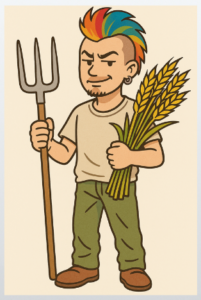
Division of labor highlights the importance of differences between individuals.
For example, consider an extreme case of a primitive society, where similar people perform similar tasks.
In these societies, people usually hunt and farm together, and any division of labor is very limited.
If a person wanted to become a painter, trade with other villages, or become a doctor, they might not be accepted by the group.
In pre-modern societies, those who stand out are often suppressed.
However, in modern and contemporary societies, more individualistic ideas become necessary to outperform rivals, so it becomes essential to be a “standout.”
That said, it is important to note that the way one stands out can affect the degree of backlash they receive.
For example, standing out by speaking a foreign language differs from standing out because of an unconventional hairstyle.
Of course, there are contexts where an unconventional hairstyle can be considered an important form of individuality.
Since the modern era, societies have developed divisions of labor including police officers, judges, politicians, farmers, butchers, supermarket workers, and so on.
Within supermarkets themselves, roles are further divided into tasks such as cashiers, procurement, and cleaning.
In extreme cases, there are even layers of specialization where parts are made to produce other parts, which are then used to manufacture machines that produce yet more parts.
I am reminded of the movie “Charlie and the Chocolate Factory,” which featured a job solely dedicated to capping toothpaste tubes.
The ability to choose one’s occupation to some extent according to one’s abilities fosters a sense of freedom and individuality among people.
Even if a particular occupation cannot be freely chosen, the mere existence of a diverse range of occupations in society is thought to generate individuality.
People often create new jobs and roles themselves, thinking ‘‘Could such work exist?’’ and continuously expanding possibilities.
Recently, services for outsourcing job resignations have emerged, representing a form of division of labor that was almost nonexistent before.
In the past, machines took over many tasks as part of the division of labor, and more recently, artificial intelligence (AI) has begun to assume many of these roles.
The nature of division of labor changes over time, and there may come a time when humans no longer perform routine, non-individualized tasks.
【Interesting Question】Why is it that as individuals become increasingly autonomous and personal, they also grow more dependent on society and develop stronger social solidarity?
Let us assume that division of labor promotes individual autonomy, personal identity, and freedom.
But why does it also generate social solidarity?
In short, it is because division of labor creates a system of mutual interdependence that connects people to one another.
An increase in freedom and individuality also means that individuals become irreplaceable within a given society.
For example, in traditional hunter-gatherer societies, if one hunter were absent, others could easily take their place.
If a single farmer or hunter were missing, society would not immediately suffer.
This is because in pre-modern societies, most members were farmers or hunters, so many substitutes were available.
More specifically, can a company president or a mayor be easily replaced?
What about specialists like a craftsman who makes unique parts, a manga artist, or a chef?
Of course, some occupations are easier to substitute than others,
but mastering a specific profession takes time, and the more specialized the occupation, the harder it is to find a replacement.
This is likely why companies struggle with early retirement among young employees.
The increase in freedom and individuality leads to greater specialization,
which raises the degree of irreplaceability.
Because replacements are not readily available, individuals’ status and influence increase,and along with this increase comes a heightened sense of responsibility.
With this sense of responsibility, a sense of attachment to society (solidarity) also emerges,as individuals recognize that they are needed within their social community.
Vegetable vendors, supermarkets, farmers, politicians — all kinds of occupations are mutually interdependent,and they form a sense of solidarity by regarding each other as indispensable.
In this way, parts are incorporated as essential components of the whole,and individuals, as parts, become conscious of their connection (bond) to society as a whole.
Whether consciously or unconsciously, society has become one in which individuals cannot avoid being connected.
【Column】What is Sociology?
Sociology, broadly speaking, is the academic study that focuses literally on society.However, the key issue lies in the theory that defines the concept of society and the methods used to analyze and understand that society.
Theory and method vary among sociologists.
For example, even when studying the same phenomenon like suicide,different theories and methods can lead to different explanations and understandings.
Kazushi Tamano argues that the phrase “there are as many sociologies as there are sociologists” is a blatant falsehood, and that sociology essentially boils down to a few simple ideas proposed by Max Weber, Durkheim, and Georg Simmel.
He further states that contemporary sociology is merely a variation on the frameworks introduced by these three thinkers.
I find these variations extremely important, and I am interested in examining the subtle sociological attitudes and methodological differences, as well as the critical developments and refinements from predecessors, such as those between Durkheim and Parsons, Parsons and Merton, and Merton and Luhmann.
However, broadly and roughly speaking, categorizing sociology into these three main figures serves as a useful guideline.
Karl Marx
For example, Karl Marx emphasized that society is determined by its economic conditions.
Sociology, however, is a discipline that seeks to consider not only economic factors but also human subjective consciousness,
as well as the collective consciousness (objective consciousness) that emerges from the complex interplay of people and elements such as economy, religion, and politics.
The idea of examining elements beyond economics to understand society was proposed even before Durkheim, by thinkers such as Auguste Comte (who was the first to call himself a sociologist).
If one emphasizes the economic aspect of society, it aligns with a Marxist perspective.
Focusing on the individual corresponds to Georg Simmel’s(micro-level) approach.Emphasizing the collective group reflects Durkheim’s (macro-level) perspective.
Rather than simply focusing on either micro (small-scale) or macro (large-scale) perspectives,
approaching society from micro to macro corresponds to Max Weber’s meso (intermediate) perspective.
This means understanding the same society through different viewpoints.
Sociology after these three thinkers falls into one of their conceptual approaches,
resulting in more specialized differences in theory and method regarding how to approach society.
For example, Parsons and Luhmann’s systems theory and Mannheim’s ideological perspective lean toward the macro level,
while Schutz’s phenomenological sociology and Garfinkel’s ethnomethodology are closer to the micro level.
Merton, who proposed middle-range theory, is generally seen as closer to the meso level.
Although this classification is somewhat simplified, it serves as an easy-to-understand framework.
So, what did society mean to them?
Leaving Durkheim for later,
let us examine the other perspectives on the nature of society.
Georg Simmel
According to Hiroshi Murata,the basic image in sociology is relationships and interactions between people.
Murata calls this the “Simmelian fundamental premise of sociology.”
In Simmel’s terminology, this is psychic interaction.
The smallest social unit is a dyadic relationship,which expands in scale to groups, organizations, entire societies, and global society.
Max Weber
It is acceptable to define society as relations between individuals, but this raises the questions of what individuals are and what relations entail.
For example, Weber emphasized action. In other words, for Weber, society can be understood as interaction of actions. More specifically, this refers to social action (which is distinguished from mere behavior).
Society is conceived as a dynamic process in which social actions mutually influence one another.
His methodological approach primarily emphasized the use of ideal types and the method of difference (as a means of causal inference).
George Herbert Mead
The emphasis on action is a perspective shared by George Herbert Mead as well.
More specifically, he focused on the process by which individuals develop self-consciousness through interactions with others, learn social roles, and engage in social behavior.
Mead’s theoretical stance is often referred to as social behaviorism, which holds that mental phenomena (such as mind, consciousness, intellect, and subjectivity) can be empirically and scientifically understood through observable external actions.
This perspective is rooted in pragmatism, of which Mead was one of the founding figures.
In Mead’s theory, human action consists of two components: internal action and external action.
Talcott Parsons
For Talcott Parsons, society is understood as a system of action or a “system of roles“.
In short, society (or the social system) is conceptualized as a structure of interactions among actions and roles.
He attempted to analyze society using the AGIL schema, which served as a framework for identifying the functional prerequisites of any social system.
According to Mr. Murata, the reason for conceptualizing society as a social system lies in the intention to focus not on the concrete and complex totality, but rather on the theoretical and conceptual structure of society.
This perspective—focusing on forms rather than elements as in Simmel, and actions rather than psychological states as in Weber can be understood as a kind of lens (framework, theory, tool, or epistemology) through which phenomena are interpreted.
Since it is difficult to fully grasp society in all its complexity, we adopt more abstract tools, or, when even abstraction becomes difficult, we develop tools specialized in observing the concrete interactions between actual individuals.
Alternatively, we may design tools that allow us to explore empirically verifiable phenomena within a more limited, meso-level scope.
Robert King Merton
In the case of Robert King Merton, rather than engaging in highly abstract discussions about society as a whole (macro-level society), he placed greater emphasis on concrete approaches, conceptual tools, and empirical analysis based on those tools.
His focus was not on the total society, but rather on specific, empirically observable segments (middle-range social units), their structures, and their functions.
As a methodological approach, he is well known for functional analysis, which includes concepts such as function vs. dysfunction, manifest vs. latent functions, and functional alternatives.
Among his concrete analytical contributions, the concept of the self-fulfilling prophecy is particularly famous.
Sociology at the time was, in extreme terms, divided into two tendencies: one that emphasized the importance of theory but lacked empirical testability (as seen in Mannheim and Parsons), and another that focused on empirical research but offered only limited explanatory power or uncertain significance.
Merton aimed to integrate theory and empirical research in sociology by developing what he called theories of the middle range.
Niklas Luhmann
For Luhmann, society is a communication system, and his approach is based on functional analysis.
Luhmann distinguished the social system from human biological and psychological systems.
It is difficult for beginners to understand social systems theories such as those by Parsons and Luhmann.
This may be partly because these theories were developed with hints from scientific knowledge like cybernetics.
It is essential to note that Jürgen Habermas (1929–) conceptualized society as a system composed of both action and communication, engaging in debates with Niklas Luhmann.
Furthermore, Anthony Giddens (1938–), who criticized Parsons’ systems theory and proposed structuration theory, offering a novel perspective on social structure, is also an important figure in contemporary sociology.
the sense of wonder
The book Sociology published by Yuhikaku describes sociology in a clear manner as follows:
“It is the sense of wonder at the existence of social order, or rather, the continuous questioning of the mystery that social order exists despite various disruptions and breaches. If one possesses this sensibility, that is sociology.”
Durkheim focused on breaches such as suicide rates and crime, and considered the distinction between normality and abnormality in these phenomena as well as their latent functions (functions that are unintended or unconscious).
This perspective is connected to Mead’s idea that consciousness arises only in states of conflict.
It is also important to note that the founders of sociology emerged during times of rapid social change such as wars and industrialization, which produced conflict, breaches, and social disintegration.
One could say that the historical context stimulated this sociological sensibility.
A sociological sense of wonder is essential to sociology. Durkheim’s inquiries were filled with this sense. He had a unique ability to pose fundamental questions, such as what binds people together in society.
More importantly, he did not merely ask these questions. He also had the capacity to empirically examine them through concepts like the division of labor and religion.
However, what matters most is not just the ability to verify or solve problems, but the ability to discover significant problems in the first place.
What makes Durkheim’s approach fascinating is how he questioned whether crime is something that must be entirely eliminated. He asked instead whether crime might actually be a sign that society is functioning normally, and whether it serves a positive function within the social order.
Sociologist Toshiki Sato argues that sociology is essential because it allows us to see the significance of thinking differently.
What matters is the ability to discover problems from perspectives we might not normally consider.
Through the sociological framework, which is a distinct lens unlike psychology, economics, religious studies, or medicine, we can perceive unique and exciting views of the world.
Sociology enables us to reframe the ordinary and discover new meanings in what might otherwise go unnoticed.
The analytical tool of functional analysis, or the metaphorical lens through which we view society, is not limited to academic use.
I believe it fosters flexible, diverse, balanced, and creative ways of thinking in all areas of life, including art, business, and even romantic relationships.
In this sense, sociology can be considered an indispensable discipline for creativity.
This is especially true when one seeks to create something for society (for people).
References
Recommended Readings
Emile Durkheim「The Division of Labor in Society」
Emile Durkheim「「The Division of Labor in Society」
DK Publishing, Sarah Tomley「The Sociology Book: Big Ideas Simply Explained (DK Big Ideas) (English Edition)」
About the Japanese version of this article
This article is a translation of an article written in [https://souzouhou.com/2024/11/27/durkheim-4-1/]. For detailed references, please refer to this link.
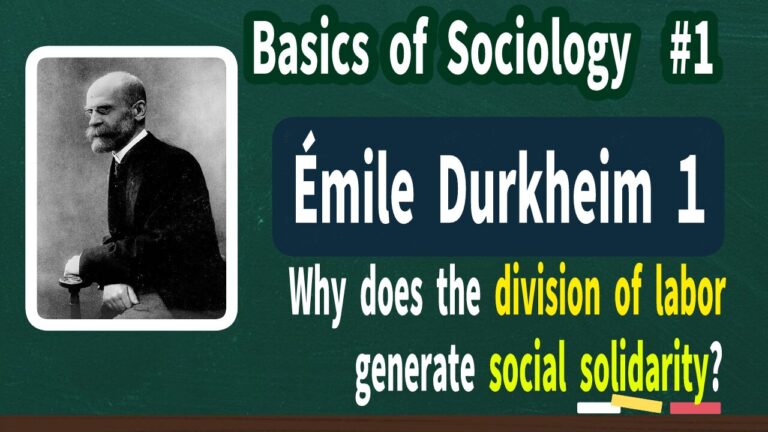
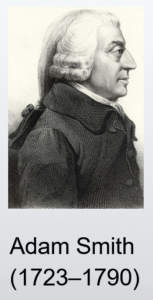

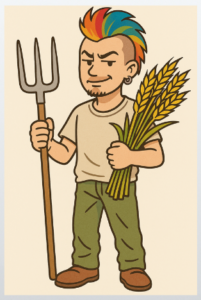

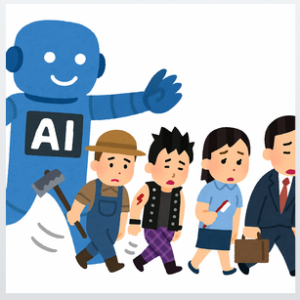
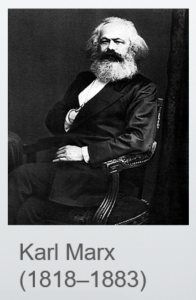
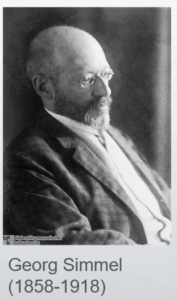
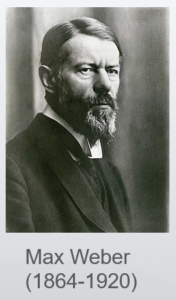
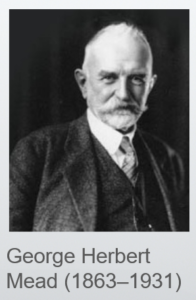
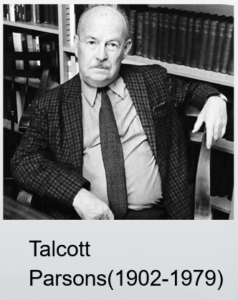
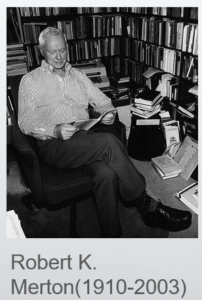
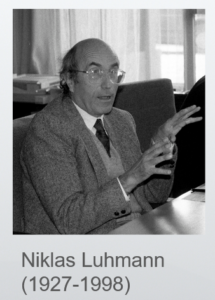




Comments